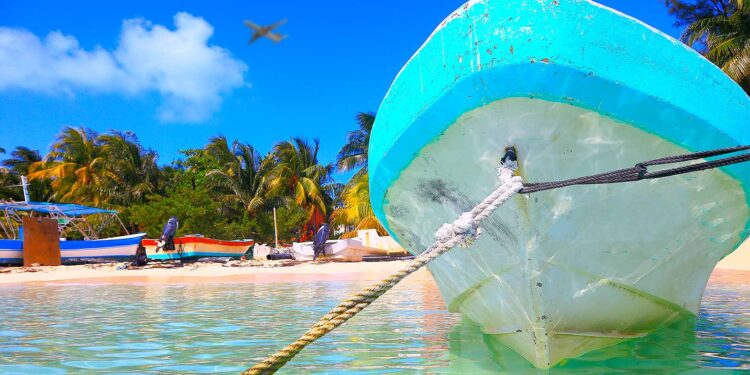Business Aircraft Ops to the Dominican Republic – Part 1: Airports, Parking & Ground Handling

The Dominican Republic occupies the eastern two thirds of the island of Hispaniola. The second largest Caribbean nation after Cuba, the Dominican Republic has a population of over 10 million and is a popular destination for general aviation (GA) business and tourism movements.
If planning a GA flight into the country, the following is an overview of what you need to know:
1. Primary airports
Most popular airports of entry (AOEs) in the country are Santo Domingo (MDSD), La Romana (MDLR), Punta Cana (MDPC) and Santo Domingo (MDJB). Additionally, several domestic-only airports are available to GA, with Barahona (MDBH) being one of the most popular.
2. Peak season and parking considerations
Mid-December through April is high season for the Dominican Republic. Depending upon your destination parking may become an issue during this time. MDSD and MDPC do run out of parking from time to time during high season ([mid-December through April]), but MDLR usually has ample parking available. Operators of larger GA equipment may be parked away from the traditional GA parking areas at certain airports, so it’s best to verify this in advance. Note that the only airport with hangar space available for transient GA movements is MDJB.
3. Ground handling and CIQ services
MDPC, MDLR and MDJB have general aviation terminals (GAT) while MDSD has a fixed-base operator (FBO). Customs, immigration, and quarantine (CIQ) clearance is normally done at the GAT or FBO with normal clearance time of about 5-10 minutes, depending upon traffic and if all required information is provided to authorities in advance. Upon arrival crew and passenger passports are taken by the handler to CIQ personnel and luggage is x-rayed.
4. Ground handling requests
Any request for handling should include full aircraft information, maximum takeoff weight (MTOW), schedule, and crew and passenger information with passport details along with pilot license numbers. Your ground handler will fill out gen decs (14 are normally required) prior to the aircraft’s arrival. For private flights no documentation needs to be sent in advance, but all required documentation must be onboard, as authorities conduct random checks from time to time.
5. Fuel and credit arrangements
Credit arrangements can be set up in advance for fuel/services/airport fees, and this is generally not an issue. For most services other than fuel uplifts, consumer credit cards are also accepted for payment. While fuel availability is not an issue in this region we recommend carrying a fuel release, as fuelers don’t accept credit cards, only fuel carnets. For tech stop purposes we recommend MDLR, as GA aircraft don’t experience uplift delays here. However, other airports in the Dominican Republic can become inundated with commercial traffic.
6. In-flight catering
For in-flight catering orders it’s best to provide at least 24 hours notice. In-flight caterers are available at all major airports, and/or catering may be directly sourced from local hotels/restaurants.
7. Ramp access
In the Dominican Republic private vehicles are not permitted airside due to security considerations. Your handler will provide all needed on-ramp transport.
8. Aircraft disinfection
Airport authorities require that all aircraft on international arrival have cargo areas sprayed and disinfected. This is done by an appointed airport vendor, and the pilot in command (PIC) should be available to open the cargo door.
9. Agricultural considerations
Upon international arrival all meats, fruits and vegetables should be disposed of as international waste. In some cases certain onboard catering items may be stored at the airport, but it’s always important to confirm this in advance. Note than up to three bottles of alcohol are permitted per passenger. As fees for bringing in more than the duty free exemption are not standard it’s important to verify applicable charges in advance.
10. Hotels and local transport
Crew accommodation can be an issue during high season, especially in the La Romana area. During peak season, 4-star crew accommodations typically range from 300-500 USD/night. Note that some hotels impose a four night minimum stay requirement, and in some cases, these rooms must be prepaid and are non-refundable. During off peak periods accommodation prices typically range 175-250 USD/night with less onerous cancellation policies. While accommodations are possible to obtain close to some airports, most hotels are some distance away. Arranging pre-paid (car with driver) local transport is not usually an issue, even during peak season.
Conclusion
Airport infrastructure, ground handling services, ground support equipment (GSE) availability and fuel uplift options are very good at all major airports throughout the Dominican Republic. It’s important to ensure that the aircraft documentation is onboard the aircraft in case there is a check by airport authorities. Also, be aware of the agricultural restrictions when there is catering onboard the aircraft.




